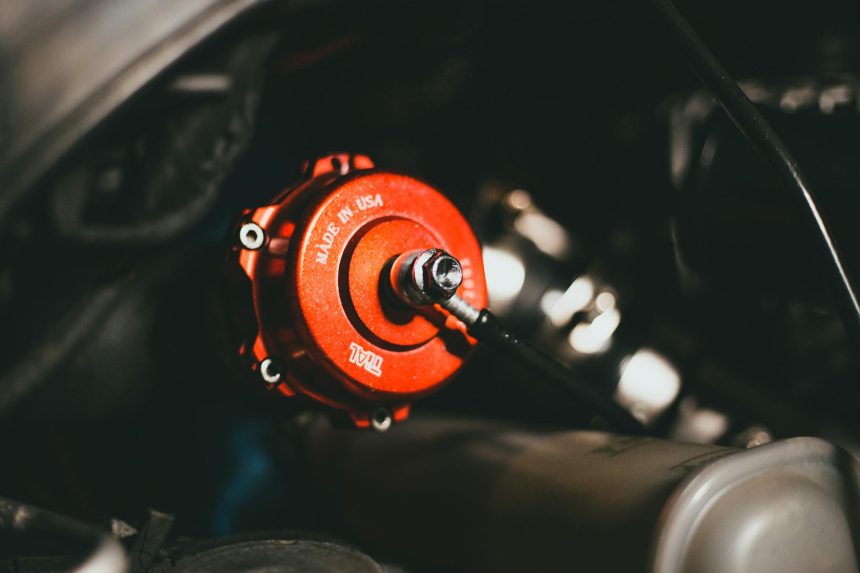## Louisiana’s Carbon Capture: A 50-Year Industry Powering the Future
Louisiana’s energy landscape is undergoing a significant transformation, and at its heart lies a technology that has been quietly shaping the state’s industrial might for nearly five decades: carbon capture and injection. Far from being a nascent concept, this sophisticated process is a well-established pillar of Louisiana’s energy industry, boasting a robust infrastructure and a proven track record. As the world grapples with climate change and seeks innovative solutions, understanding the depth and breadth of Louisiana’s expertise in this critical field becomes paramount. This isn’t just about capturing emissions; it’s about securing a sustainable energy future, driving economic growth, and solidifying the state’s position as a leader in environmental stewardship.
### The Deep Roots of Carbon Capture in the Bayou State
The statement from Faucheux highlighting the near fifty-year history of CO₂ transportation and injection in Louisiana is more than just a statistic; it’s a testament to foresight and consistent investment. This long-standing presence means that the state possesses an unparalleled understanding of the complexities involved in safely and effectively managing captured carbon dioxide.
#### Decades of Operational Excellence
For almost half a century, Louisiana’s industrial sector has been involved in the capture, transportation, and underground injection of carbon dioxide. This isn’t a new experiment; it’s a mature industry with ingrained best practices. This extensive operational history has fostered:
* **Advanced Infrastructure:** A network of pipelines and injection wells has been developed and refined over decades, ensuring efficient and secure CO₂ management.
* **Skilled Workforce:** Generations of engineers, geologists, and technicians have honed their skills in this specialized field, creating a deep pool of talent.
* **Regulatory Framework:** A mature regulatory environment has evolved to oversee these operations, prioritizing safety and environmental protection.
### Understanding the “Why” Behind Carbon Capture
The growing global emphasis on reducing greenhouse gas emissions has propelled carbon capture, utilization, and storage (CCUS) technologies into the spotlight. Louisiana’s long-standing involvement positions it perfectly to lead in this critical area.
#### Addressing Climate Change Imperatives
Carbon capture plays a vital role in mitigating the impacts of climate change by preventing large volumes of CO₂ from entering the atmosphere. This is achieved through several key processes:
1. **Capture:** CO₂ is separated from other gases at industrial sources, such as power plants or manufacturing facilities.
2. **Transportation:** The captured CO₂ is then transported, typically via pipelines, to a designated storage or utilization site.
3. **Storage/Utilization:** The CO₂ is either injected deep underground into geological formations for permanent storage or used in various industrial applications.
#### Economic Opportunities and Energy Security
Beyond environmental benefits, CCUS offers significant economic advantages:
* **Job Creation:** The expansion of carbon capture infrastructure and related industries creates new, high-skilled employment opportunities.
* **Industrial Longevity:** It allows existing industries to continue operating while reducing their carbon footprint, ensuring their long-term viability.
* **Innovation Hub:** Louisiana’s established expertise can attract further investment in CCUS research and development, fostering a new era of energy innovation.
### Louisiana’s Robust Infrastructure: A Foundation for the Future
The “robust” nature of Louisiana’s CO₂ transportation and injection capabilities is the bedrock upon which future CCUS expansion will be built. This existing infrastructure is a significant competitive advantage.
#### The Backbone: Pipelines and Injection Wells
The state’s extensive network of CO₂ pipelines is a marvel of industrial engineering. These pipelines are designed for the specific challenges of transporting a dense, gaseous substance over long distances. Similarly, the injection wells are carefully selected and managed geological formations, often saline aquifers or depleted oil and gas reservoirs, capable of safely and permanently storing vast quantities of CO₂.
#### Geological Advantage: The Perfect Storage Medium
Louisiana’s unique geological makeup provides ideal conditions for CO₂ sequestration. The presence of deep, porous, and permeable rock formations, coupled with impermeable caprocks that prevent leakage, makes the state a prime location for underground carbon storage.
### The Broader Implications: What Does This Mean for Louisiana and Beyond?
The mature state of carbon capture in Louisiana has far-reaching implications, positioning the state as a crucial player in the global energy transition.
#### A Model for Other Regions
Louisiana’s nearly five decades of experience offer a valuable blueprint for other regions looking to develop their own CCUS capabilities. The lessons learned, the technological advancements, and the regulatory frameworks established in Louisiana can accelerate the deployment of CCUS solutions worldwide.
#### Driving Innovation and Investment
The established infrastructure and expertise attract significant investment in CCUS technologies and projects. This fosters a virtuous cycle of innovation, leading to more efficient and cost-effective capture and storage methods.
#### Enhancing Energy Security and Independence
By enabling the continued operation of vital energy infrastructure while mitigating emissions, CCUS contributes to both energy security and a cleaner energy future. It allows for a more pragmatic and phased approach to decarbonization.
#### The Future of Industrial Decarbonization
As industries worldwide face increasing pressure to decarbonize, Louisiana’s established CCUS capabilities offer a tangible and proven pathway. This includes:
* **Industrial Clusters:** Developing hubs where multiple industrial facilities can share CO₂ capture and transportation infrastructure.
* **Direct Air Capture (DAC):** Integrating CCUS with emerging DAC technologies to remove existing CO₂ from the atmosphere.
* **Carbon Utilization:** Exploring and expanding the use of captured CO₂ in products like concrete, fuels, and chemicals.
### The Road Ahead: Opportunities and Challenges
While Louisiana’s position in carbon capture is strong, continued growth and success will depend on addressing ongoing opportunities and challenges.
#### Key Opportunities:
* **Policy Support:** Continued and consistent policy support at federal and state levels is crucial for incentivizing CCUS development.
* **Technological Advancement:** Investing in research and development to improve capture efficiency and reduce costs.
* **Public Engagement:** Building public understanding and trust in CCUS technologies through transparent communication.
#### Navigating Challenges:
* **Infrastructure Expansion:** Scaling up pipeline networks and identifying new, suitable geological storage sites.
* **Cost Competitiveness:** Ensuring CCUS projects are economically viable alongside other decarbonization strategies.
* **Long-Term Monitoring:** Maintaining rigorous long-term monitoring protocols for storage sites to ensure containment.
### Conclusion: Louisiana’s Enduring Leadership in Carbon Management
Louisiana’s nearly five-decade journey in carbon capture and injection is not merely a historical footnote; it’s a powerful testament to the state’s pioneering spirit and its deep-seated commitment to the energy industry. With a robust infrastructure, a highly skilled workforce, and a geologically advantageous position, Louisiana is uniquely poised to lead the nation and the world in the critical mission of decarbonization. The established expertise in CO₂ transportation and injection provides a solid foundation for innovation, economic growth, and a more sustainable energy future.
**Are you ready to explore the groundbreaking potential of Louisiana’s advanced carbon capture industry? Dive deeper into the technologies and opportunities shaping our planet’s future.**
copyright 2025 thebossmind.com
[Source 1: U.S. Department of Energy – Carbon Capture, Utilization, and Storage](https://www.energy.gov/eere/carbon-capture-utilization-and-storage)
[Source 2: Environmental Protection Agency – Carbon Dioxide Capture and Storage](https://www.epa.gov/carbon-capture)
Featured image provided by Pexels — photo by Erik Mclean










